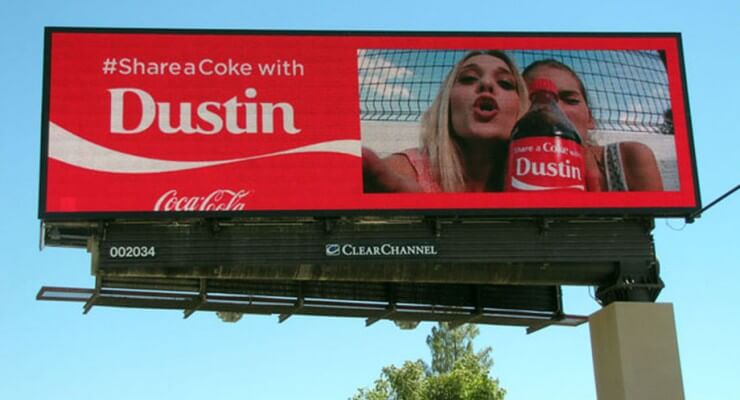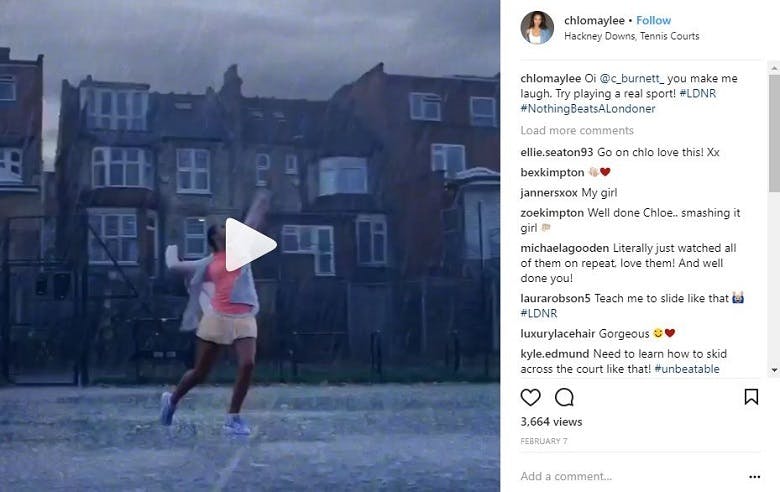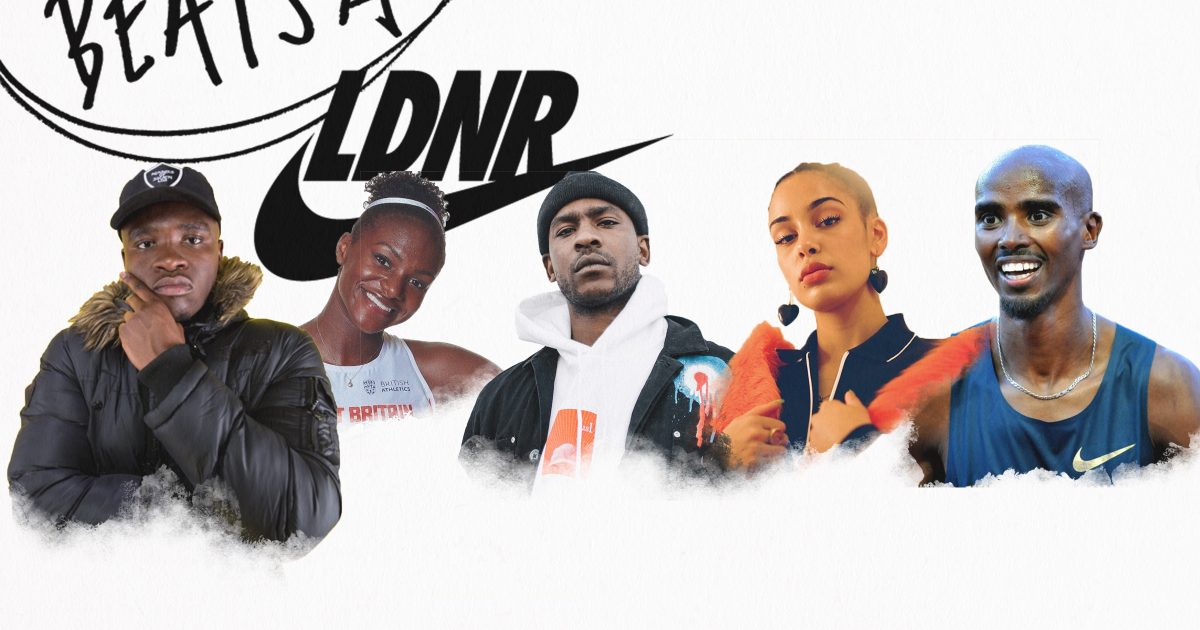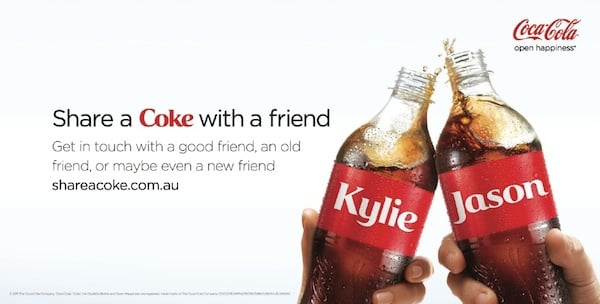LO1 (U20): Know how existing advertising campaigns embed advertisements across a range of media products (P1, M1)
P1(U20): Describe an existing media advertising campaign:
Describe two existing media advertising media advertising campaigns that have products across a range of media
Add in supporting visual images (2)
Must include:
Aims and objectives
target audience
key messages
approach
representation
campaign logistics
choice of media
call to action
relevant legal and ethical issues and regulatory bodies
Nike - 'Nothing Beats a Londoner' Campaign:
Aims and Objectives:
Research found that Nike had somewhat lost connection with young Londoners. In response, a campaign was devised that channeled into the heart and soul of what it means to be a kid growing up in London.
Young Londoners already wear Nike but don’t relate to Nike ads blasted around the city featuring ‘out of touch’ international stars like Ronaldo. Nike had to do something that was for the kids not the athletes and that related to their lives, talked true to their struggles and showed that Nike understood the city.
Target Audience:
By focusing on key participants, target audiences, cultural factors, and social dynamics relevant to the heartbeat of the city, Nike created a viral campaign that combined the identity of living in London with the brand and its purpose. Significant concentrations of this campaign is the adversity faced by those who grow up in London, like on going racism, sexism, poverty, and violence, along with typical childhood and athletic struggles. So women, people of ethnic minorities, C2DE classes, Londoners and the British public
Rather than being centric to London as a city, the campaign highlighted individuals who make up the soul of the city. While this concept risked alienating cities outside of London, it was ultimately relatable and transferable to other locations and cultures with similar values and ideals.
Key Messages:
Significant concentrations of this campaign is the adversity faced by those who grow up in London, like on going racism, sexism, poverty, and violence, along with typical childhood and athletic struggles. The campaign highlighted individuals who make up the soul of the city. Nothing beats a Londoner is authentically focused on the kids. They are the essence of the ad. It’s their language that speaks loudest. And it’s the authentic focus on their struggle that resonates strongest with the target audience.
Approach:
Coke - 'Share a Coke' Campaign:
Aims and Objectives:
Coca-Cola had two objectives they wanted to achieve through the
campaign. The first and primary objective was to increase their sales as it was
the summer period. The second objective was to increase their engagement with
its customers by talking to them. They wanted this campaign to create a
platform where people won't just consume the product but also love it.
Approach:
The campaigns main approach was the printing of various names and nicknames onto coca cola bottles, however there were other important aspects to the campaign. Given that coke wanted to engage with younger target audience it was crucial that online elements of the campaign where a large focal point. Coke encouraged users to take to social media by using #'s to share their own moments of family and friends. As well as this coke rolled out the ‘Share a Coke’ campaign through various media channels like newspapers and TV commercials. By adding names on the bottles in the campaign and advert then it makes it more memorable for those with the names featured.
But it was social media channels, particularly Facebook
that the campaign really developed. Through Facebook, users participated in a
large scale. Moreover, the campaign had achieved mass sharing as customers
could connect with each other. Basically, consumers had to SMS their friend’s
name which would be displayed live on the iconic Coca-Cola sign located at Sydney’s
King’s Cross. The user then would receive an MMS via which they could
share their chosen friend’s name lit up in lights through Facebook or send
him/her mail. On top of this an element of experimental marketing was used
where customers could custom make their own bottles.
Call to Action:
Coca-Cola created a powerful call to action in the campaign. The
campaign name in its self was a call to action. It made purchasing Coke and
share their memorable moments with their friends and family on social media.
Coke had ensured that the campaign slogan should be something that is
very catchy and easy to recall such that the call for action should immediately
come to mind when the customer purchases the brand.
Campaign Logistics:
The campaign was conceived by Australian marketing
firm 'Ogilvy' in conjunction with Coca Cola, and as such was first launched in
the country in 2011. From there the campaign was expanded further into new
markets. Coke ensured to keep the campaign fresh as time went on, for example
in 2015 the name pool was expanded to 1,000 with various nicknames like 'bro'
and 'sidekick' being added to the inventory. In 2016, the company replaced
people's names with lyrics from 70 popular songs including 'Lean on
Me' and 'We are the Champions'. In 2017, the campaign returned to the
US with a new variant; holiday destinations. Bottles of coke are labelled with favourite summer
holiday spots such as Hawaii, Ibiza, Barbados etc.
Target Audience:
The main target audience for the 'Share
a Coke' campaign is teenagers. In recent years carbonated drinks have been
under fire for being unhealthy. Health concerns have been raised conversations
about regulation on carbonated drinks and talks about healthier alternatives
has exploded which has contributed to the decline of Coke.
By
targeting the drink at teenagers it created a personal connection with them by
putting 250 of the most common names on the drinks bottles, a simple, powerful
idea that would connect teens to Coca-Cola. In recent studies Coca-Cola also
found out that many teenagers thought that the drink was out dated and more of
a parents drink. By adding a social element to drinking Coke it meant teenagers
would also relate socializing to the brand, which was done to encourage
teenagers to buy a drink for their friends with their name on it.
Representation:
The campaign will now include over 1000 names that will be printed on the drink. By having this amount of names printed on the bottles it means many names from different cultural backgrounds will be used. This will help represent people from all over the world and make them feel included within the brand. Coca-Cola South Pacific Marketing Director, Lucie Austin, stated that the goal for the new campaign was to have every Australian be able to participate in the campaign.
Coca-Cola's campaign runs on an extremely large scale, spanning many types of
media, including billboards, online content, social media, and influencers.
Increasing the number of people the campaign represents, will allow for greater
participation in the campaign as a whole. Additionally, adding names spanning
different cultural backgrounds will make more consumers feel represented by the
campaign.
Key
messages:
The
main message of the Share a Coke Campaign is to make teenagers share a coke
with a friend. It encourages people to buy their product by adding names to the
bottle and involving the audience personally and promoting the brand. This
campaign may have also improved brand identity by Coke showing that they care
about the younger generations and the importance of having a social life.
Choice of media:
Coca cola used a range of media to advertise the Share a Coke campaign. Coca-Cola ramped up the activity throughout the summer with a TV ad, a Google+ Hangout with musician Connor Maynard, which allowed the publics to join and 'hangout' with other people. This was effective because it followed the campaign theme of bring people together to socialise.
Also partnership with Ocado and by touring the country with kiosks and vending machines offering an on-site printing service so consumers could print any name on-pack.
In addition a lot of social media was
used to target the teenage audience. For example, they were encouraged to use
hashtags on apps like Twitter and Facebook.
Legal and Ethical Issues:
One issue specific too this campaign was being able to represent a diverse range of names printed on their products appropriate to the culture in which they are being printed. As well as this ethical issues arise given the nature of Coke's product, chronic consumption of their product is associated with serious negative health issues such as obesity and cancer. It call into question whether a product like this should be allowed to be advertised, especially to certain audiences such as children who may not be fully aware of the negative side effects that come with consumption. As well as this there were some issues that came with the custom message element of the campaign. Coke had to ensure they had a good message censoring system to ensure any rude or insensitive messages were not shown on a large billboard in a public area, which could result in legal ramifications.
M1 (U20): Evaluate different cross media advertising campaigns for consistency of message.
Evaluate different cross media advertising campaigns for consistency of message, across different media forms such as print, audio-visual for TV, online advertising.
Nike - 'Nothing Beats a Londoner' Campaign:
Nike uses cross media pathways to expand their message with a varied level consistency. Nikes message of younger generations rising up against the challenges they face is seen in multiple forms of media. Nike's campaign was featured on Instagram where this consistent message was portrayed in @chlomaylee's post. Their rise through challenges was seen as the tennis player is playing in the pouring rain while also wearing clothes produced by Nike.
There are plenty of athletes and celebrities in the advert such as Skepta, Giggs and Big Shaq alongside national treasures like Mo Farah and Gareth Southgate. In the billboard above there are no relations to celebrities, however there are many in other forms of media Nike used.
In other posters such as this, some of the celebrities are seen which were featured in the campaign. The consistency of the message of rising up against adversity can be seen as the celebrities shown here are all black and therefore are likely to have experienced racism, a form of adversity. Comparing this to the main form of the campaign, the video, the message is consistent while taking a different form. Five black celebrities show how they have risen up to big positions while in London and they are being used to promote to others like them. London also is prominent in this poster, similar to that in the main campaign.
Coke- 'Share
a Coke Campaign'
Within the
share a coke campaign they used a huge variety of media platforms
to promote the campaign. Some examples include
TV advertisements, print adverts like billboards, digital posters,
bus posters and bus stop posters and classified newspaper ads. However, Coke
used social media as a huge part of
their advertisement campaign, specifically making Facebook posts
and the use of hashtags. The hashtags allowed the public to
get involved and share pictures of the bottle around the internet.
There is a clear consistency throughout the social media posts
through the use of colours and product placement. For example, Coke have used
the same colours in all of the adverts, which include white, red and brown (the
colour of the drink). Also, in each of the adverts, print and digital, the
product has been placed, as the main subject with a white background making it stand
out a lot more. These colours connote the brand of coke and red and white
had been Coke's brand colours ever since they started.
The
product is features very prominently throughout each advertisement in the Share
a Coke Campaign with the main image being the drink bottle or can with a name
on it. There are many examples which all show the product on a white background
which contrasts the colour of the drink, which is a mix of brown and black, or
the brand colour being red. By having a bright white background it helps
attract the eyes of the audience and with colours such as
black and red allows the product to stand out in the bright background.
The call to action in most of the adverts used by Coke in the 'Share a Coke' campaign had a simple call to action; share a Coke. This call is prominent in most adverts with the phrase next to the bottle. The message is consistent with the original advert as the theme of drinking Coke with friends and sharing Coke bottles is common throughout. There is also the call to action of the individual buying a bottle by the personalization of each advert with a name on the bottles. This call to action is very consistent on every advert.






















Comments
Post a Comment